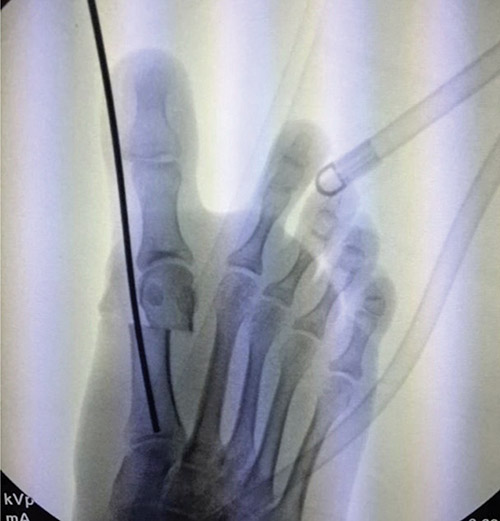


I have noticed over the years that many people are familiar with the term bunion, but do not fully understand what it is, and what treatment options exist for this problem.
A bunion is an abnormal bump or bony growth on the inside of the foot at the location of the big toe joint. A true bunion is on the side of the foot and not on the top. When a bump is present at the top of the foot, it is likely due to arthritic changes at the big toe joint.
A bunion can be a small bump that does not affect a shoe size or cause pain, or a very large bony growth that causes a lot of pain and makes it difficult to find comfortable shoes.
Bunions, medically known as Hallux Valgus, are more common in women than men. There is usually a genetic component to the deformity, as well as other factors such as foot type, activity level and the types of shoes one spends most of his/her day in. If one spends many hours a day in unsupportive shoes such as flats or high heels, he/she is causing unnatural deforming forces on the foot.
Bunions can hurt every step you take, hurt only sometimes or not hurt at all. Be mindful of the shoes you buy and make sure they are the correct size both in length and width.
If one has a bunion deformity, I recommend seeing a foot specialist. One will want to have the big toe joint evaluated and be given recommendations on how to possibly prevent further deformity. An x- ray is performed to see the position of the bones of the foot and to evaluate the severity of the deformity.
Conservative treatment usually entails proper fitting shoes, bunion pads or shields or other modalities that decrease the pain at the bump. If the pain is mostly from inflammation of the joint, a cortisone injection can be very helpful to decrease the inflammation. This will not get rid of the deformity, but often relieves the pain for weeks, and sometimes months, at a time. If the bunion is mild to moderate, custom foot orthotics can help as well to decrease deforming forces on the foot. If these conservative treatment options do not help, surgical correction is usually the best option.
The goal of surgery is to restore the proper foot shape. This can be achieved in many different ways. The key is to perform the correct surgical procedure on the proper patient. One’s activity level and expectations should be specifically discussed with the surgeon.
How long will one be off the foot and out of work after surgery? It really depends on the type of surgery that is performed and the kind of work you do. Surgery can be done in a variety of ways, depending on the severity of your deformity. The procedure is often performed in a same-day surgery center and under local anesthesia, but I often recommend mild general anesthesia as well.
Bunion surgery has often been at the forefront of surgical innovation. Newer techniques are available that allow less down time, smaller incisions, faster recovery and less postoperative pain.
So, do you have bunion? Is it painful? Are you having difficulties finding shoes that fit? Is the bump not cosmetically appealing to you? Make an appointment with a foot surgeon to discuss your options and don’t allow your bunion to become severe.
Ever hear of a foot transplant? Me neither. So please take care of the feet you have. Dunkin Donuts are not the only ones that like to keep America running.
Dr. Popowitz is a board-certified podiatrist and foot and ankle surgeon. He is chief of the Foot & Ankle division at The Center for Musculoskeletal Disorders. He also has offices in Queens, Brooklyn and Manhattan. He specializes in both traditional and minimally invasive bunion surgery. For more information or to schedule a consultation, please call 201-510-3777.













